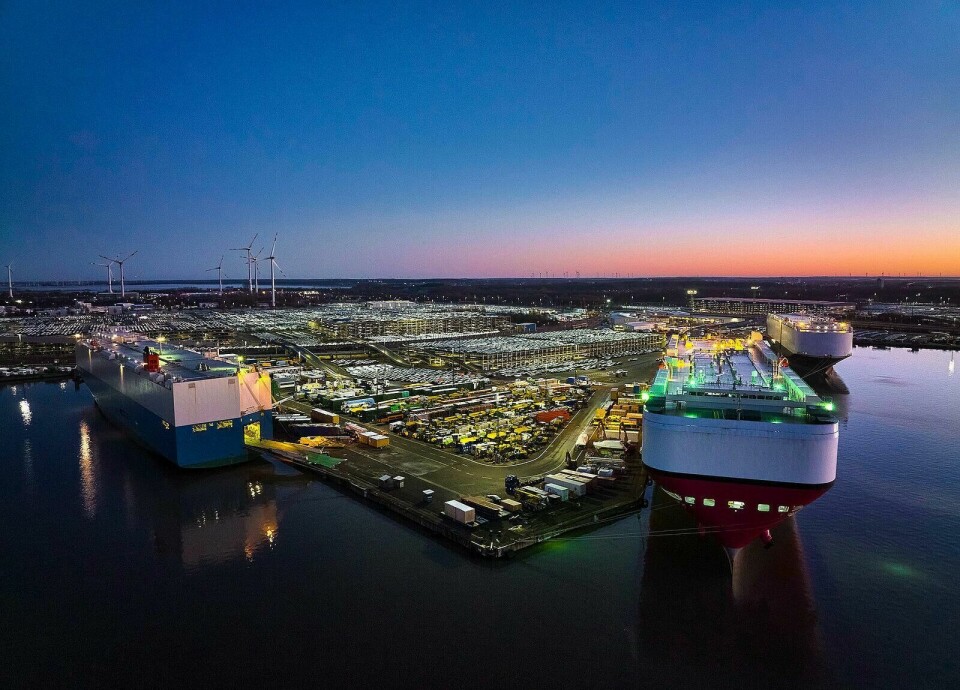BYD wants to conquer Europe by maritime means
BYD’s first own car freighter, the Explorer No. 1, and its maiden voyage to Bremerhaven mark the beginning of a new era for the OEM, which is intended to pave the way to Europe. The car manufacturer’s private fleet is set to grow further in the coming months.

The Chinese car manufacturer is not leaving the way in which its vehicles reach Germany to chance, but is instead going the extra mile in terms of its commitment to Germany. In mid-January, the BYD Explorer No. 1, the first of eight planned own car carriers, started its maiden voyage in the port of Shenzhen, China. Around four weeks later, the almost 200-metre-long car carrier loaded with 3,000 electric vehicles docked for the first time at the car terminal of the shipping company-independent BLG Logistics in Bremerhaven. The ship had previously docked in Vlissingen in the Netherlands. According to a BLG spokesperson, it will remain in Bremerhaven for four days. From there it will travel to Zeebrugge in Belgium and then back to China.
With over 1.7 million vehicles handled per year, 240 hectares of space, room for 70,000 cars and 18 berths for car carriers, the car terminal in Bremerhaven is one of the largest in the world. All well-known car shipping companies serve Bremerhaven regularly and around 1,000 car carriers call at the terminal every year. Matthias Magnor, COO and CEO of the BLG Group from 2025, also reported at the official reception of the BYD Explorer No. 1 that around 10,000 Chinese cars had already been received in Bremerhaven in 2023 and that a total of 20% of the cars handled at the car terminal come from Asian manufacturers.
“Our port has been open to car manufacturers from all over the world for many years. With this decision, BYD is also emphasising the importance of our location as an international hub for automotive logistics. We handle vehicles here, store them, provide technical services and handle distribution by lorry, rail or ship,” Magnor said.
Although he cannot confirm any concrete plans for the frequency of calls by BYD ships in Bremerhaven, Magnor assumes that the cooperation between OEM and BLG will result in regular calls in the future.
Recently there has been a trend in Chinese carmakers looking to own their ro-ro capacity. Last year, BYD was reported to have at least six car carriers on order because it couldn’t find enough available space with logistics service providers. Each vessel has capacity to carry more than 7,000 car equivalent units (CEUs). Rival Chinese carmakers Chery International and JAC have also taken steps to secure ro-ro capacity in a joint venture with Anhui Provincial Port and Shipping Group. Called Anhui Hangrui International Ro-Ro Transportation Company, the joint venture will also be engaged in international container shipping, cargo transport and supply chain services, according to Seatrade Maritime News.
BYD already has more than a foot in the door in Germany. In order to make the brand even better known in Europe and Germany, the Chinese company is entering the European Men’s Football Championship in the summer of 2024 as an automotive partner. BYD is thus replacing Volkswagen as UEFA partner. The Wolfsburg-based company had decided not to extend its sponsorship contract for the home European Championships for cost reasons, as it is currently implementing a cost-cutting programme worth billions.
“As an official partner of UEFA Euro 2024, we will be presenting our latest electric vehicles to a wide audience during this prestigious event,” said the Chinese OEM, commenting on the strategic move.
For safety reasons, according to BYD, the Explorer was unfortunately not allowed to be entered and viewed from the inside during the official event. Kai Stührenberg, State Councillor for Ports, is particularly enthusiastic about the Chinese OEM’s ambitious plans: “BYD is planning to send seven more ships of this type to European ports every two months. It is impressive to see the speed at which these ships are being built.”





